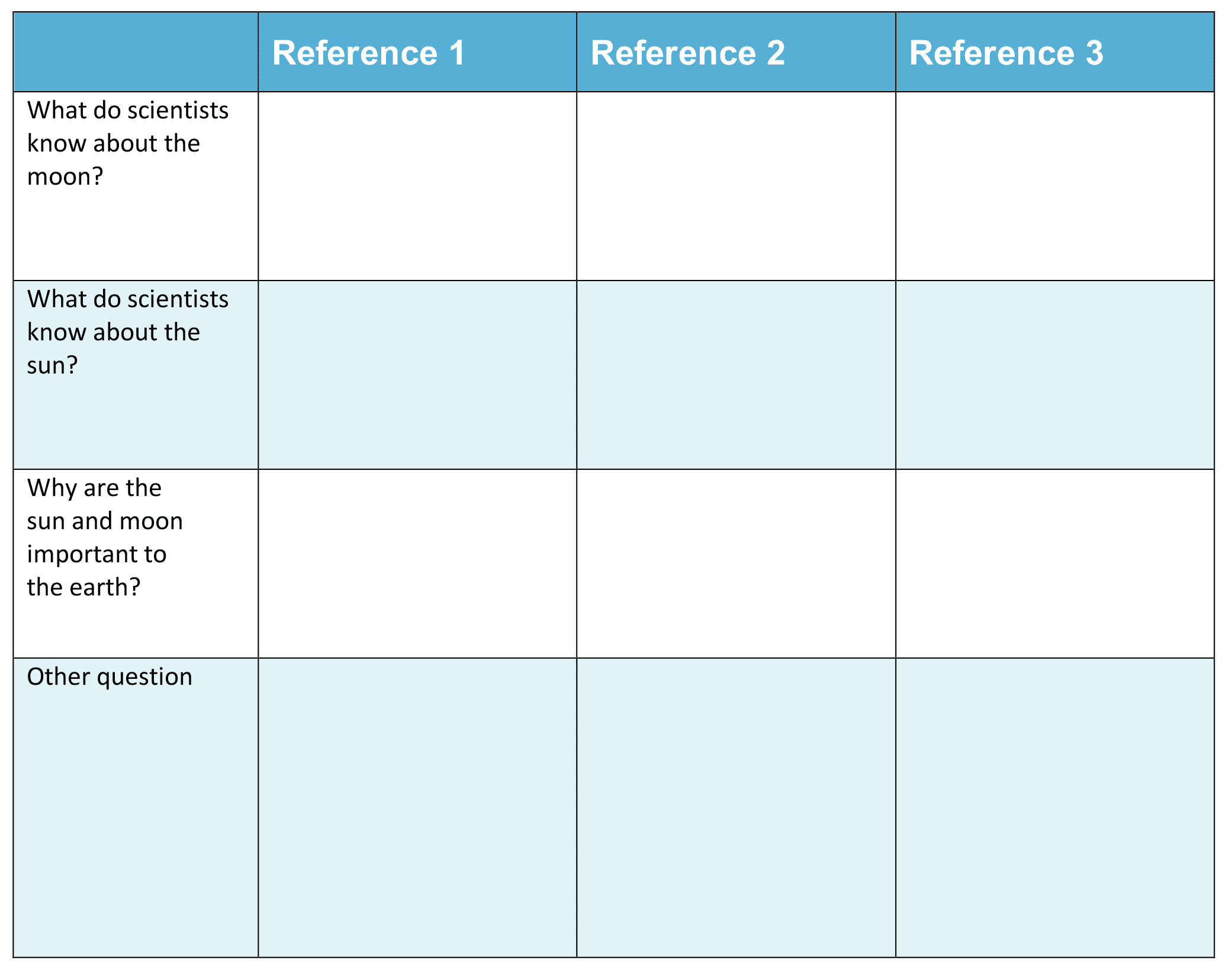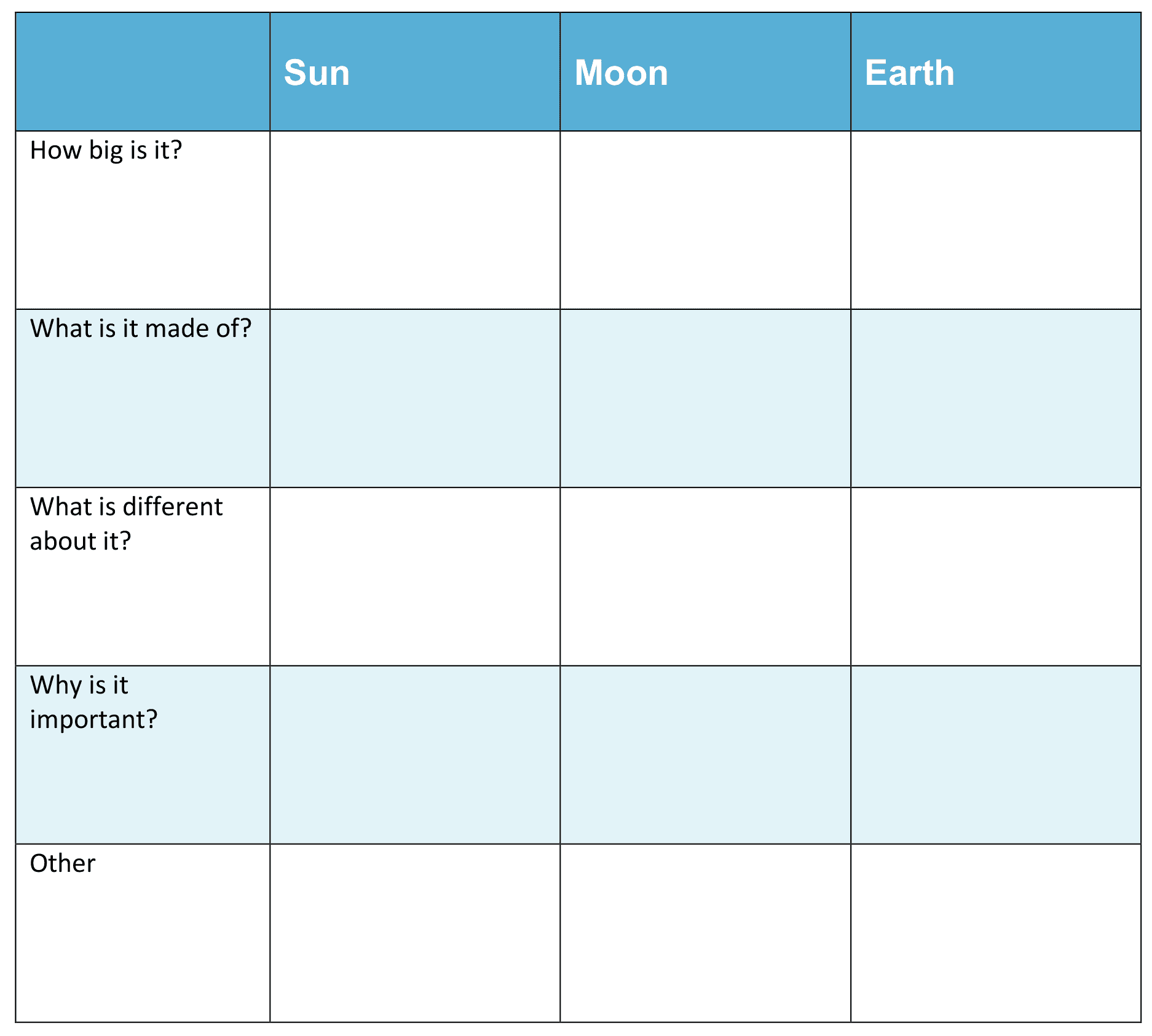Information for Teachers
Curriculum links
This investigation is linked to the following Grade 5 Next Generation Science Standards.
PS1.A: Structure and Properties of Matter
Matter of any type can be subdivided into particles that are too small to see, but even then the matter still exists and can be detected by other means. A model showing that gases are made from matter particles that are too small to see and are moving freely around in space can explain many observations, including the inflation and shape of a balloon and the effects of air on larger particles or objects. (5-PS1-1)
The amount (weight) of matter is conserved when it changes form, even in transitions in which it seems to vanish. (5-PS1-2)
Measurements of a variety of properties can be used to identify materials. (Boundary: At this grade level, mass and weight are not distinguished, and no attempt is made to define the unseen particles or explain the atomic-scale mechanism of evaporation and condensation.) (5-PS1-3)
PS2.B: Types of Interactions
The gravitational force of Earth acting on an object near Earth’s surface pulls that object toward the planet’s center. (5-PS2-1)
PS3.D: Energy in Chemical Processes and Everyday Life
The energy released [from] food was once energy from the sun that was captured by plants in the chemical process that forms plant matter (from air and water). (5-PS3-1)
ESS1.A: The Universe and its Stars
The sun is a star that appears larger and brighter than other stars because it is closer. Stars range greatly in their distance from Earth. (5-ESS1-1)
ESS1.B: Earth and the Solar System
The orbits of Earth around the sun and of the moon around Earth, together with the rotation of Earth about an axis between its North and South poles, cause observable patterns. These include day and night; daily changes in the length and direction of shadows; and different positions of the sun, moon, and stars at different times of the day, month, and year. (5-ESS1-2)
ESS2.A: Earth Materials and Systems
Earth’s major systems are the geosphere (solid and molten rock, soil, and sediments), the hydrosphere (water and ice), the atmosphere (air), and the biosphere (living things, including humans). These systems interact in multiple ways to affect Earth’s surface materials and processes. The ocean supports a variety of ecosystems and organisms, shapes landforms, and influences climate. Winds and clouds in the atmosphere interact with the landforms to determine patterns of weather. (5-ESS2-1)
ESS3.C: Human Impacts on Earth Systems
Human activities in agriculture, industry, and everyday life have had major effects on the land, vegetation, streams, ocean, air, and even outer space. But individuals and communities are doing things to help protect Earth’s resources and environments. (5-ESS3-1)
How to search the internet
1 Keep your request short
Fewer words will give a more accurate search.
2 Choose exactly what you want
For example: Arctic Circle Climate
3 Use quotes
Double quotes around a set of words tell the search engine to consider those exact words in that exact order without any change. For example: “Arctic Circle Climate”
4 Use the plus sign (+)
If you add a plus sign (+) between words, the internet will search for all the words. For example: migrate+birds+whales+mammal
5 Use the minus sign (–) to say what you don’t want
Use a minus sign (–) to show words you do not want to appear in your results. For example: if you search for burrowing animals and do not want mammals in your search, –mammals will exclude mammals. Note that you need to put a space before the minus sign for the word to be excluded.
6 Be very clear about what you don’t want
Part 1
Ask questions and define problems
After reading The Earth, the Sun, and the Moon, you may have questions about these parts of the solar system.
List your questions
- Compare your list with questions that others have.
- Choose a question you would like to investigate.
- You can work alone, with a partner, or in a small group.
You may want to choose one or more of these questions to investigate
Q1. What information is being collected about the moon? How is it collected?
Q2. What information is being collected about the sun? How is it collected?
Q3. How do scientists study the earth, the sun, and the moon? Why is it important?
Go to Part 2 Investigate →Part 2
Investigate
Helpful websites
You may want to uses websites to help you’re your investigations.
Search:
NASA+kids
Astronomy+kids
Solar+system
You can see how scientists look into space through amazing telescopes:
Astronomers+telescope
You can take a tour of the universe with the Smithsonian Centre for Astrophysics:
Harvard+universe+tour+earth
Part 3
Record data
Find a way of recording your information that will allow you to see any patterns in the data.
This table may help you to collect data as you do your research.
Main question______________________________________
 Download Chart
Download Chart
Go to Part 4 Organize, analyze, and interpret data →
Part 4
Organize, analyze, and interpret data
1. Look over the information you have gathered and the patterns you have found.
What have you learned about the earth, sun, and moon?
What did you learn about the movements of the earth, sun, and moon in relation to each other?
Why are these movements important?
What do you know about the relationships between the earth, sun, and moon?
2. Search for other patterns.
3. Makes notes about what you find.
Go to Part 5 Present and share →Part 5
Present and share
Look over all of the information you have gathered and the thinking you have done.
What are the most important ideas about the earth, moon, and sun?
Make a chart showing the most important of these ideas.
 Download Chart
Download Chart
← Return to menu